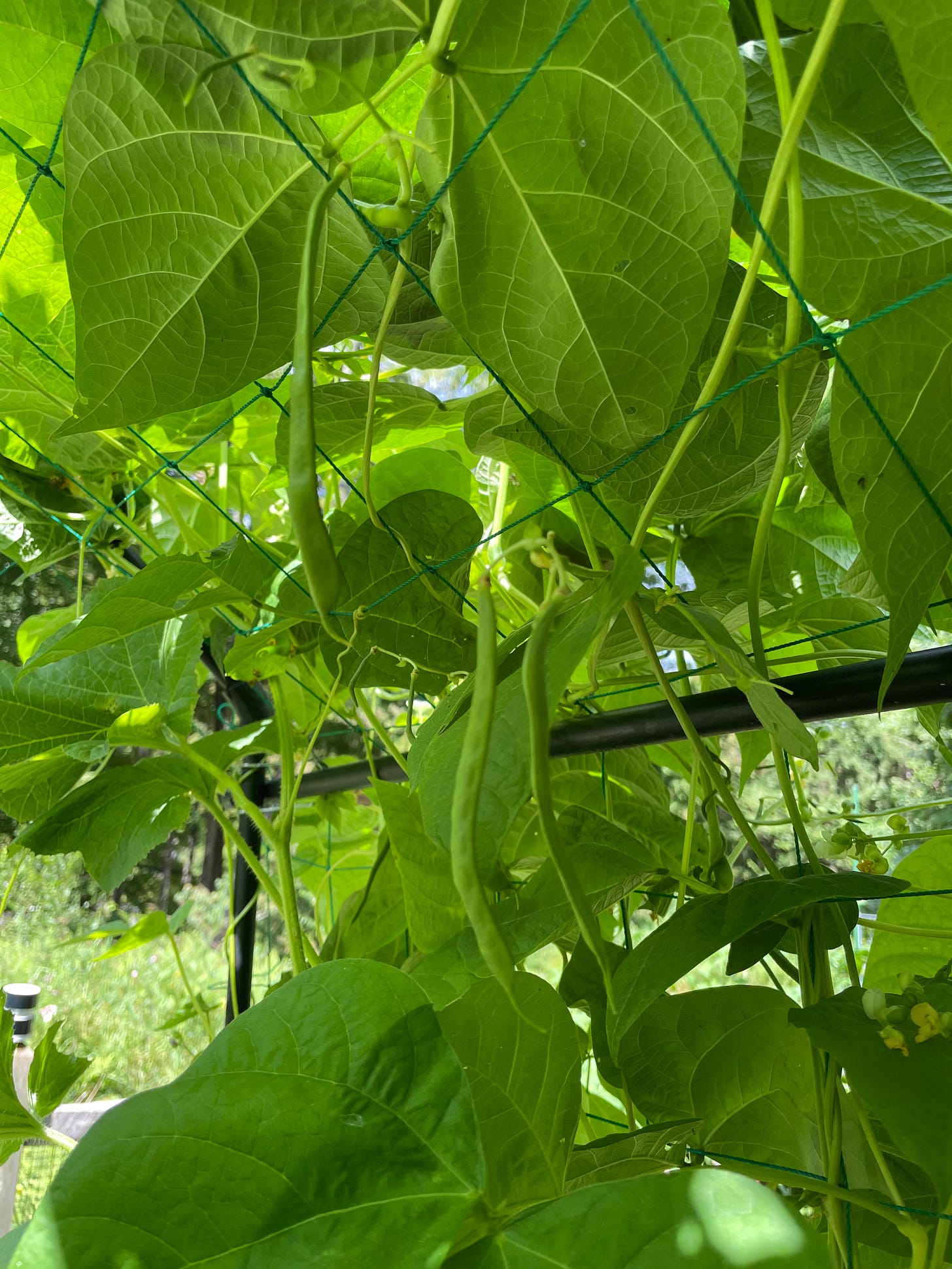An overstory at the center of the garden
At this point in the season, the trellis straddling the main garden path is a twisted mass of vines filled with hanging vegetables and fruit
One of the many pleasures of visiting the vegetable garden this summer is the small arbor that spans the main pathway running down its center. It’s covered with a dense, twisting network of vines and deep green leaves that provide an inviting refuge from the heat and sun.
Like many of you, I suppose, I’ve always harbored this vision of sitting at a wooden table in dappled shade cast by decades-old grape vines, their fruits just within reach for plucking. Well, my trellis isn’t that! There’s no table, or grapes for that matter! It has become, though, an overstory garden of its own at the center of our modest vegetable patch.
It’s a wonderful spot for a stroll or a place to hang out for a few minutes and collect your thoughts. It’s also home to an expanding collection of fruits and vegetables, the result of my habit of wanting more plants than I have room for and the ensuing overplanting when the season is young, space seems at a premium and all seems possible.
With the garden at full maturity, the trellis has become a dense thicket. There’s an array of string beans, cucumbers and melons hanging from the vines that have spread up the trellis’s nylon netting, across the top and – in the case of some – down the opposite side. I can no longer make out which vines are which, or which way they are heading or whence they came. At this point, it doesn’t matter. I just pick and cut things from the vines and place them into our bushel basket.
The act of gently tugging flat, 4-inch long Italian beans from a variety aptly called “Marvel of Venice” from the mother vine overhead is as simple as it is timeless. These marvels, which were planted along the north edge of the trellis back in the spring, share space on the trellis with “Blue Lake,” which is your quintessential American green bean.
I first grew Blue Lake on this same trellis in my garden outside Washington, DC, in 2020 during the first year of the pandemic. The following year, it was so prolific I left dozens of beans to dry on the vine well into the fall. One cold, early November day I pulled them all down and extracted the beautiful, pearl-white hard beans inside to save for future gardens. This year I got them out from their envelope and planted them again, 350 miles north at our garden here in western Massachusetts. I love that connection.
On the south side of the trellis resides the most productive cucumber I’ve ever grown. It’s a hybrid called Unagi that I bought in 2023 from Johnny’s Selected Seeds. It shares many of the qualities of an English cucumber. Its thin, dark green skin can be eaten without peeling, there are few seeds and it is crispy and sweet. In Japan, a unagi is a freshwater eel – and when cooked has a place on a sushi menu. I suppose these cucumbers do resemble eels in shape, though that’s a terrible comparison! They grow 9-10 inches, or longer if you let them, and are so prolific that we readily hand them out to neighbors if we don’t eat them ourselves first.
The Unagis, in theory at least, share that side of the trellis with a variety of cucumber called “Little Leaf.” It’s a pickling cucumber I’ve grown for many years but this summer has been overwhelmed by its larger, more prolific cousin. I’ve been trying to coax their vines upward with some success and I’m hoping that we’ll be able to make some cucumbers to make refrigerator pickles from before the season’s done.
The newcomer to the arbor this year is a honeydew melon called “Honey Orange,” which is an orange-fleshed honeydew. I’ve never been able to grow melons before. This year I started two vines, one on the north side of the trellis, the other on the south side. So far, the north is winning. Either way, I'm tickled each time I walk under the trellis and see these burgeoning fruit orbs suspended from the vines.








I hope that table and grapes, or a comparable pergola, are in your future...how lovely your trellis looks!